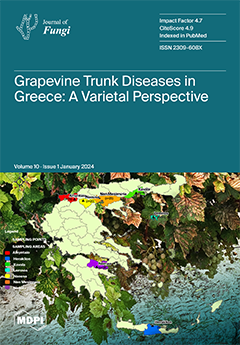Candida auris is a recently emerged human fungal pathogen that has posed a significant threat to public health. Since its first identification in 2009, this fungus has caused nosocomial infections in over 47 countries across all inhabited continents. As of May 2023, the whole-genome sequences of over 4000 strains have been reported and a diversity of mutations, including in genes known to be associated with drug resistance in other human fungal pathogens, have been described. Among them, 387 strains contained antifungal-susceptibility information for which different methods might be used depending on the drugs and/or investigators. In most reports on
C. auris so far, the number of strains analyzed was very small, from one to a few dozen, and the statistical significance of the relationships between these genetic variants and their antifungal susceptibilities could not be assessed. In this study, we conducted genome-wide association studies on individual clades based on previously published
C. auris isolates to investigate the statistical association between genomic variants and susceptibility differences to nine antifungal drugs belonging to four major drug categories: 5-fluorocytosine, amphotericin B, fluconazole, voriconazole, itraconazole, posaconazole, anidulafungin, caspofungin, and micafungin. Due to the small sample sizes for Clades II, V, and VI, this study only assessed Clades I, III, and IV. Our analyses revealed 15 single nucleotide polymorphisms (SNPs) in Clade I (10 in coding and 5 in noncoding regions), 24 SNPs in Clade III (11 in coding and 13 in noncoding regions), and 13 SNPs in clade IV (10 in coding and 3 in noncoding regions) as statistically significantly associated with susceptibility differences to one or more of the nine antifungal drugs. While four SNPs in genes encoding lanosterol 14-α-demethylase
(ERG11) and the catalytic subunit of 1,3-beta-D-glucan synthase (
FKS1) were shared between clades, including the experimentally confirmed Ser639Phe/Pro missense substitutions in
FKS1 for echinocandin resistance, most of the identified SNPs were clade specific, consistent with their recent independent origins. Interestingly, the majority of the antifungal resistance-associated SNPs were novel, and in genes and intergenic regions that have never been reported before as associated with antifungal resistance. While targeted study is needed to confirm the role of each novel SNP, the diverse mechanisms of drug resistance in
C. auris revealed here indicate both challenges for infection control and opportunities for the development of novel antifungal drugs against this and other human fungal pathogens.
Full article






